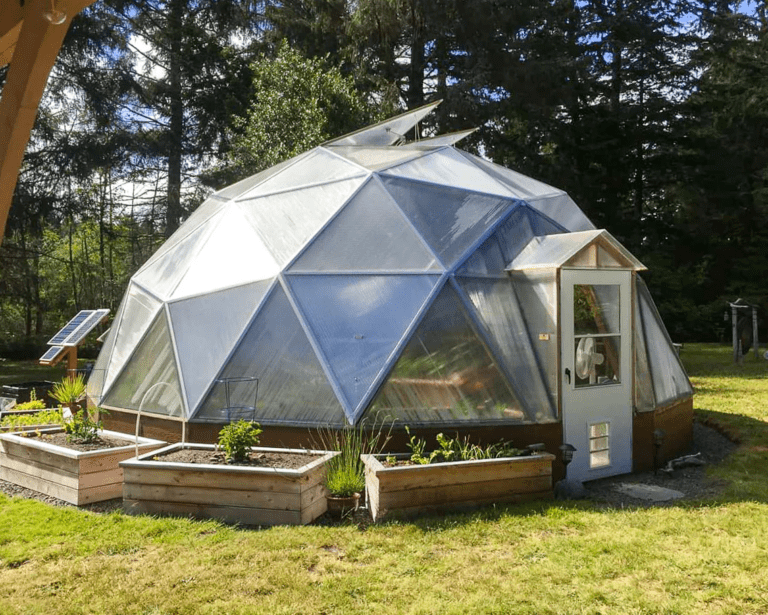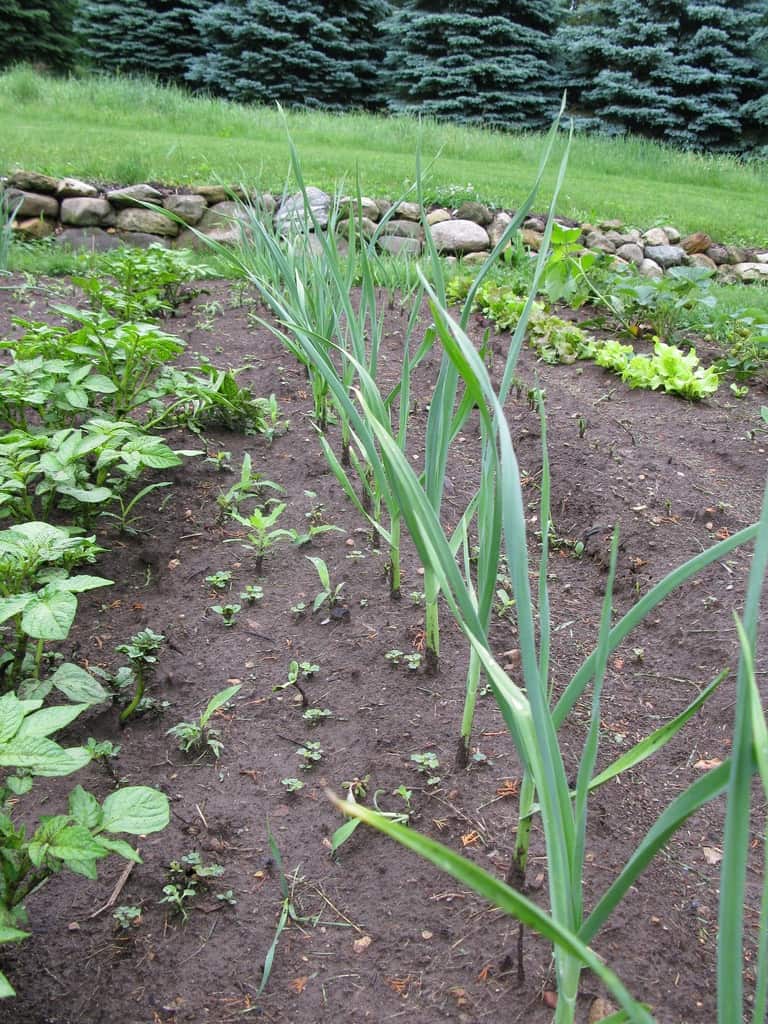The Best Tomato Companion Plants
Some plants and flowers work well together, and some should be kept far apart. Coordinating the two groups into a patch plan is often tricky, especially in a small open space. Finding the best tomato companion plants is a great deal easier than attempting to lay out your complete garden with good buddies for your vegetables.

Companion planting:
Companion planting means maturing several crops close to each other to boost nutrient uptake, increase crop production, provide pest control, and encourage pollination. Although scientists have referred to this idea of companion planting as “alchemy,” as it hasn’t been technically authorized, many skilled gardeners guarantee their cautiously collected lists of companions.
Companion planting is part folklore, part experience, and part hopeful thinking. Most companion planting techniques are passed down by growers who tested pairing plants with little success. But, there are several factors that might influence the efficiency of plant companions.
In a garden, vegetable companion planting is all about appealing to valuable insects, boosting growth, and optimizing the total yield. It’s a balancing work between delivering the right environment for insects like ladybugs and beetles and maximizing the growing season.
Fortunately, tomatoes make great companions with many well-liked garden vegetables. Some companion plants help improve the vigor and health of the tomato plants, some enhance their flavor, and other plants supposedly repel and deter diseases, insects, and pests.
If you’re going to plant some of these vegetables, why not investigate on your own and use some of the plants as companions for your tomatoes?
Let’s find out the best companions for your tomato plants!
Companion Plants to Grow With Tomatoes
Sowing tomatoes comes with many possible hindrances, from fungal diseases to blossom end rot; insects and pests like whiteflies, tomato hornworms, and aphids; blight, etc.
Pruning, careful weeding, and covering can help shelter and maintain the tomato plants until it’s time to reap them, but selecting the best companion plants for tomatoes can naturally do a lot of this hectic work.
Many plants are advertised as enhancing tomatoes’ flavor, health, and vigor. These qualities are difficult to measure, as little scientific research can back up these claims, and several other reasons may also be involved. Still, it is exciting to try them out in your vegetable garden.
Some of the plants acclaimed for tomato companion planting include:
- Asparagus
- Amaranth
- Basil
- Borage
- Beans
- Celery
- Calendula (pot marigold)
- Carrots
- Cleome
- Chive
- Cucumber
- Cosmos
- Garlic
- Lettuce
- Lemon balm
- Mint
- Marigold
- Onion
- Nasturtium
- Parsley
- Squash.
- Sage
Most knowledge around companion planting is subjective, but we have listed some of the plants that have been tried and true as partners for tomatoes:
- Basil: Tomatoes and basil are partners on and off the plate. This lively, fragrant herb repels insects and bugs, specifically hornworms and flies, and has been thought to enhance yield. Basil makes a good companion for tomatoes since it disguises its aroma. When the tomato plant’s scent is concealed, pests like moths and whiteflies cannot locate the tomato plant and infect it.
Whiteflies are insects that love to consume tomato plants. They spread a disease called the Tomato Spotted Wilt Virus. Adult moths lay eggs that create Tomato Hornworms that gobble up the plant and destroy a harvest.
- Parsley: Parsley is another model pairing with tomatoes. It boosts the development of the tomato plants and draws predators of the tomato plant towards itself, like hornworms and ladybugs, but remember to keep it far away from the mint plants.
- Garlic. Garlic is known to repel spider bugs, and a special spray made from garlic can defend the soil and tomato plants against blight.
- Squash and borage: Borage, squash, and tomatoes are a famous trio in companion planting, primarily because of timing. Borage is a flowering herb that has star-shaped blue blossoms. It is generally a big beloved of pollinators and deters tomato hornworms and other pests. Not only does it enhance the flavor and growth of tomatoes, but it also protects them, and it makes a striking and attractive garnish also. Then, by the time the squash is ready to blossom, usually by late summer, the base has already been arranged.
- French marigolds and nasturtiums: Nasturtiums and marigolds are great companions for tomatoes. Marigolds have been known to dissipate root-knot nematodes, insects that feed off of the nutrients in a tomato’s roots. Nasturtium is a common pest repellant because of its bitter, peppery oils, but be mindful of keeping it at a slight distance from the tomato plants. Nasturtium overgrows and can engulf other plants if not properly kept in check.
- Asparagus: Asparagus demonstrates the give and take of mutually beneficial companion planting. Tomatoes deter the asparagus insects with a chemical known as solanine, and the asparagus plants help clear the soil from the root-knot nematodes attracted to the tomatoes.
- Chives: Chives are a vital allium in practically any herb garden. They repel mites, aphids, and nematodes.
- Carrots: Carrots make excellent companion plants for tomatoes because they assist valuable parasitic wasps if allowed to flower. Since it is a biennial plant, blooming is most familiar with hibernated carrots. So it would be best if you considered leaving some of the carrots from your harvest in your garden beds during the fall and well into the spring. As a bonus, you can collect seeds from them as the carrots flower through their second summer.
Tomatoes Help These Plants:
Roses: Tomatoes protect roses from diseases like the black spot. You can use a spray or interplant. To make the spray, dissolve tomato leaves and water them down with 4 to 5 pints. Add one spoon of cornstarch. You can use the spray on the rose leaves if you can’t plant the tomatoes next to the rose bushes. Some people believe that cornstarch does the trick.
Benefits of Tomato Companion Planting:
Most of the information regarding tomato companion planting is subjective rather than proven scientifically. Still, using your common sense and checking what works well when designing a kitchen garden is a circumstance. Pruning, careful weeding, and covering can help shelter and maintain the tomato plants until it’s time to reap them, but selecting the best companion plants for tomatoes can naturally do a lot of this hectic work.
Tomato companion planting with specific neighboring flowers and plants can have several benefits. These include adding to and improving the soil nutrients, luring insects away, or attracting necessary pollinators, such as butterflies and bees, to the tomato plants. These are all benefits of eco-gardening and will assist you in creating a maintainable garden.
Companion plants can generate a better growing environment for other plants as well, whether it is support for growing plants, providing favorable shade, or breaking up the soil or ground cover.
What to Plant to Keep Bugs at Bay:
Tomatoes are among some of the least demanding vegetables to grow, but keeping the pests off of the tomatoes is a challenge as many different types of insects like to target the fragrant fruits. Whiteflies, aphids, and other pests like to consume the nutrients in the tomatoes and the plants, leaving them withered and yellow.
Tomato companion planting with natural protectors will help to defend them from becoming a buffet for insects and pests, and it’s also an excellent method for an environmental wildlife garden.
Some tomato companion plants have intense scents that repel or distract the insects and bugs that would otherwise infect the tomatoes. For example, growing mint repels ants, white cabbage moths, aphids, and rodents, while the onion companion planting is acknowledged to repel pests with their strong scents. Other companion plants can be used as a trap, or sacrificial plants, attracting the bugs away from the tomatoes and towards themselves.
You should include some companion flowers and plants in your creative garden beds that appeal to the predatory creatures and insects and that will keep the pests away from the tomato plants. Amaranth, for instance, plays host to valuable beetles that eat the bugs that prey on the tomatoes. They are also many vines that you can pick to grow along with your tomatoes as vegetable garden fencing ideas.
Companion Planting Tomatoes with Flowers:
You can add an appealing element to your gardens by companion planting tomatoes with certain flowers.
French Marigolds repel slugs, tomato worms, and typical garden pests. Maturing marigolds along with the tomatoes have been known to dissipate root-knot nematodes, insects that feed off of the nutrients in a tomato’s roots.
Nasturtiums are often used as a bait plant so that black flies and aphids attack them and stay away from your valued vegetables. Nasturtium is a common pest repellant because of its bitter, peppery oils, but be mindful of keeping it at a slight distance from the tomato plants. Nasturtium overgrows and can engulf other plants if not properly kept in check.
Petunias look attractive planted near the tomatoes and can also prevent a wide range of insects from coming close to the tomato plants. They are among some of the best fly repellant bushes.
Cosmos will attract the aphids away from the tomato plants and lure away the hoverflies that eat aphids. It would be best if you also tried growing cosmos with your other edible crops.
What Are Good Tomato Companion Plants?
Many plants are believed to be excellent companions for tomato plants, and the tomatoes can benefit the other plants as well. The flowers, vegetables, and herbs mentioned above are all worthy choices for tomato companion planting.
What Not to Plant with Tomatoes:
Generally, it’s good to refer to a companion planting expert when designing a vegetable garden layout. It also highlights what to avoid planting as neighbors. Tomato plants don’t cooperate with any vegetable from the cabbage family, such as kohlrabi, cauliflower, Brussels sprouts, and kale will stunt the tomato plant’s growth.
These relationships aren’t always rational. For instance, carrots are valuable to tomatoes, but fennel is not, even though it is a relative of carrots. Associate members of the nightshade group, such as eggplant, are vulnerable to the same infections as tomatoes, like early and late blight. This will burden the soil, making it tougher to plant the following year.
Bad Companions for Tomatoes:
Cabbage family: All the members of the cabbage family restrict the growth of tomato plants (cauliflower, broccoli, cabbage, Brussels sprouts, kale, collards, rutabaga, turnip, and kohlrabi).
Corn: The corn earworm is as dangerous as the tomato fruitworm. Growing these plants in close proximity can make them vulnerable to the same insects and invite ruin and a devastated garden.
Eggplant, peppers, and potatoes: The plants in the nightshade lineage are all inclined to blight, which builds up in the soil and can get worse yearly. You should avoid planting any of these plants near each other for at least three years. Hornworms love the fruit and greenery of eggplants, tomatoes, and peppers and can quickly destroy plants. Planting tomatoes close to potatoes can make the latter more vulnerable to potato blight.
Fennel: Fennel discharges a substance from its roots that stunts tomato plant growth. This ooze affects several other garden plants also.
Walnuts: Avoid planting tomatoes under butternut or walnut trees. They produce a chemical called juglone that constrains the growth of tomatoes. Tomatoes are also prone to the disease known as walnut wilt.
Do Peppers And Tomatoes Grow Well Together?
Tomatoes and peppers will grow happily alongside each other. But, it’s important to keep in mind that growing plants of the Solanaceae or Nightshade families together can raise the risk that infections might spread among them. This is particularly true if you plant and grow tomatoes and peppers together in the same bed.
Can Two Tomato Plants Be Planted Together?
Tomato plants can grow contentedly alongside each other, provided they have an accurate amount of space between them.
Tomato plants should have a space of about two feet between one another to allow each of them the facility to receive the nutrients they require to grow strong. This arrangement also protects them against fungal maladies such as blight which can easily be spread between plants.






